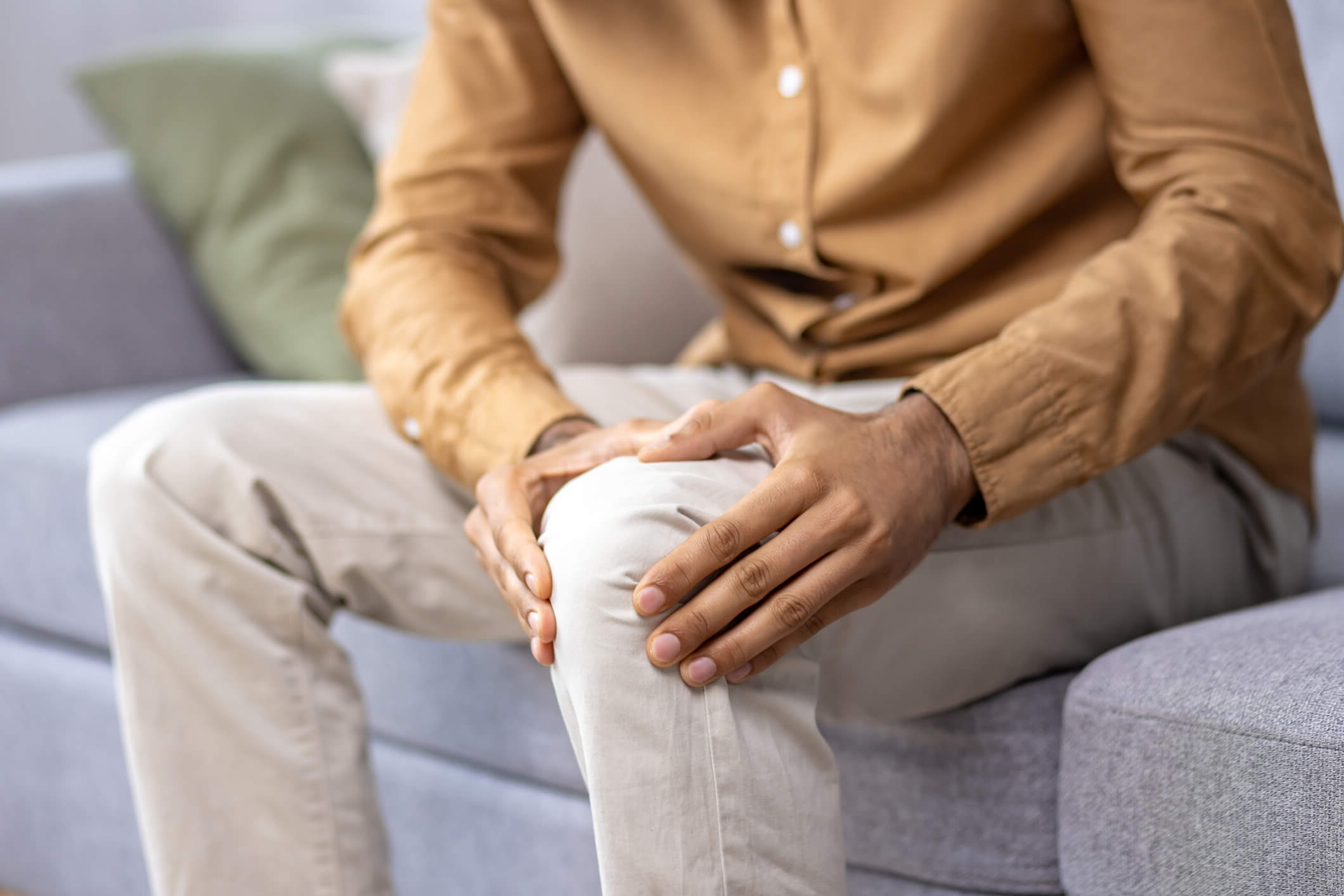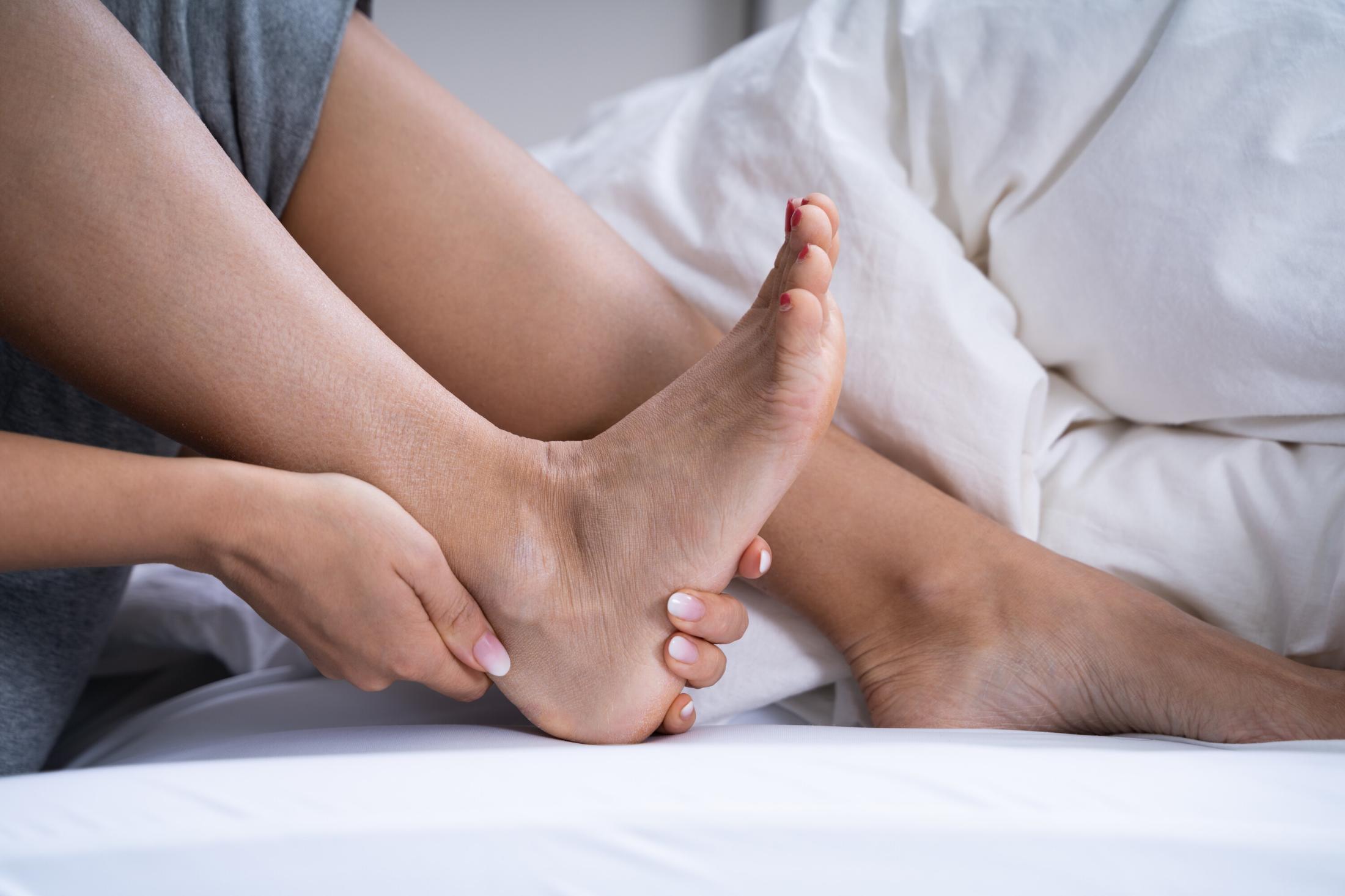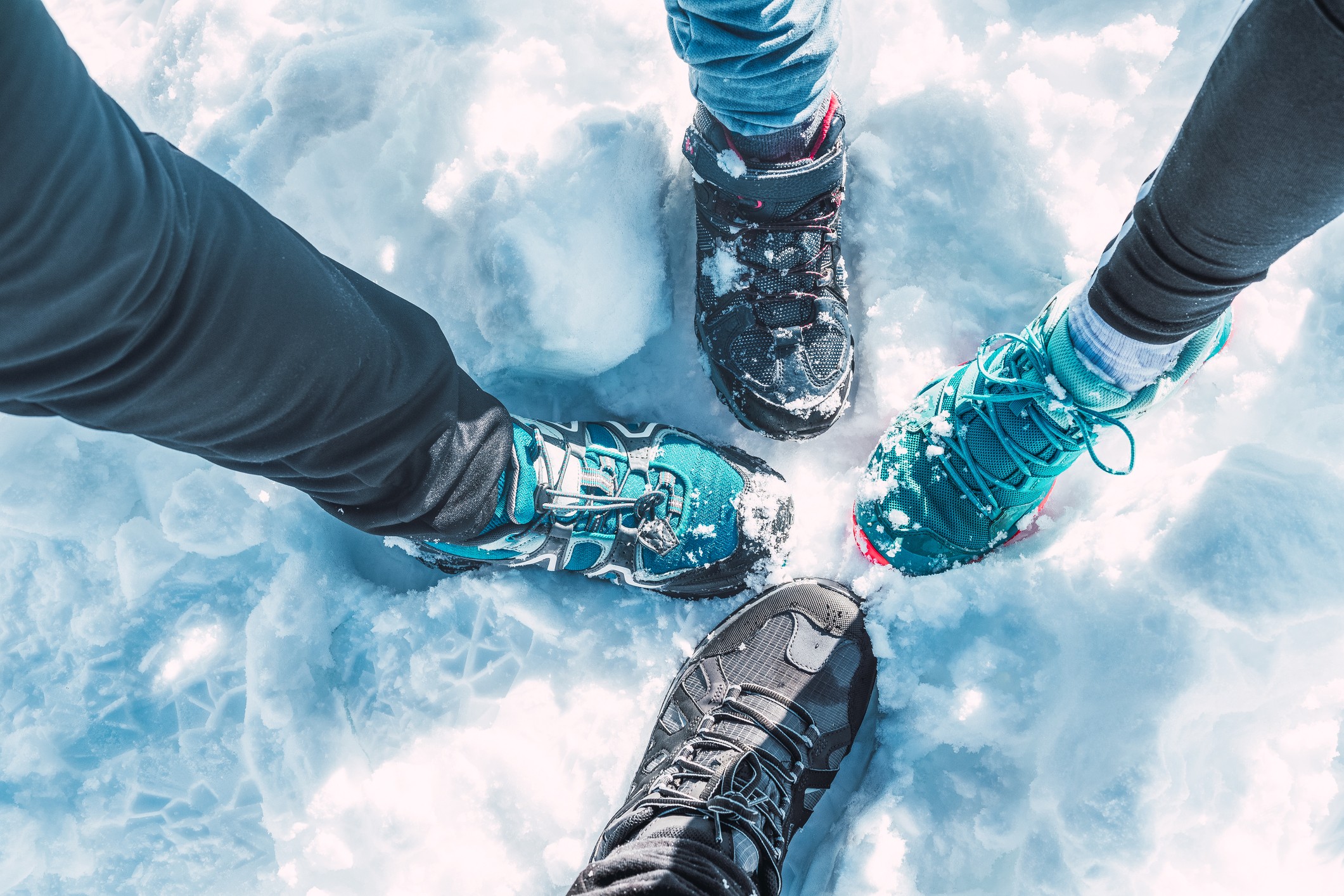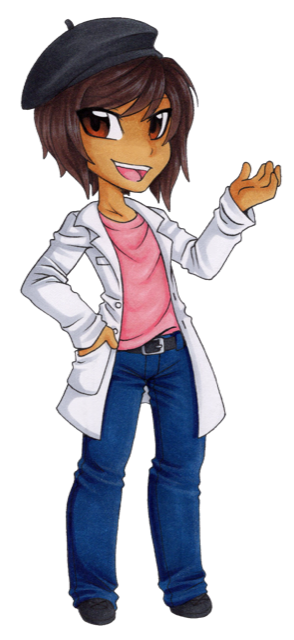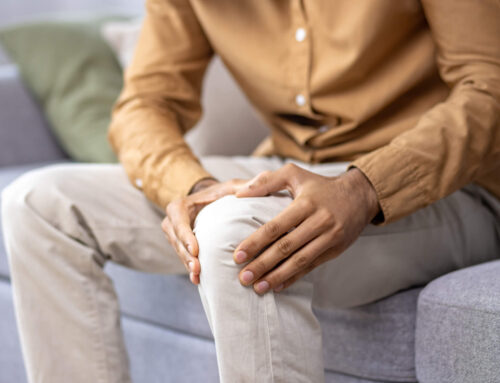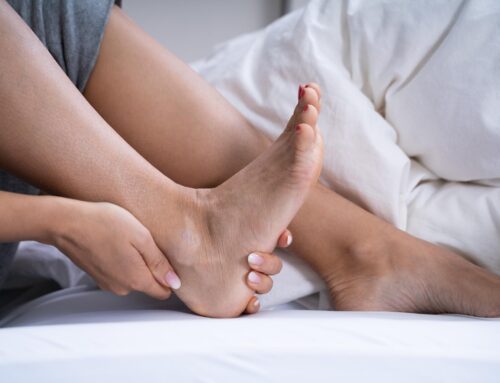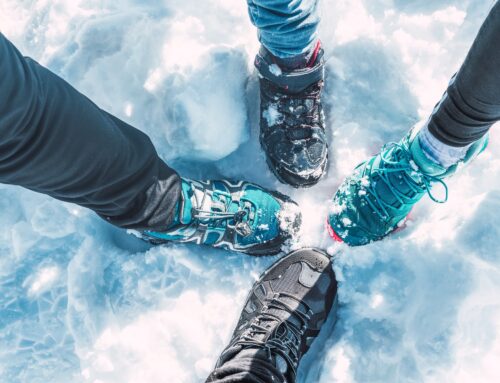Do you come home with sore feet or that heavy-leg feeling after a long day? You’re not alone — and the good news is, finding relief for tired legs and feet can be simple. Whether you spend your day on your feet, constantly moving, or sitting for long stretches without much movement, your lower body takes the hit.
Many people working in healthcare, retail, hospitality, and caregiving deal with this kind of discomfort regularly, but it doesn’t stop there — anyone can feel the effects of daily strain.
Making small changes to your daily habits and the gear you wear can lead to noticeable improvement. When you support your legs and feet the right way, you move through the day with more comfort and less fatigue.
What Causes Tired Legs and Sore Feet
It’s easy to assume that tired legs are just part of a long day, but there are a few common reasons why your legs and feet might feel sore or heavy by the time you get home. Often, it’s not just the amount of time spent on your feet, it’s how your body is being supported (or not supported) throughout the day. Understanding the causes can help you make small adjustments that lead to big improvements.
Common Everyday Strain
Daily habits can take a toll on your legs and feet, especially when they repeat day after day. Spending long hours standing or walking places constant pressure on your lower body. As gravity pulls blood downward, your circulation slows, especially if you don’t move enough to keep things flowing. Without proper support, your legs tire out faster. Shoes that lack arch support, cushioning, or a secure fit increase strain on your feet, ankles, and knees — and that discomfort builds up throughout the day.
Staying in one position for too long can be just as hard on your body. Whether you’re standing or sitting still, limited movement causes muscles to tighten and circulation to slow. By the end of the day, your legs may feel stiff, heavy, or sore. Even the weather plays a role — hot temperatures expand blood vessels and increase the likelihood of swelling. Dehydration only makes it worse by further reducing circulation.
When you combine these everyday stressors, it’s easy to see how they lead to discomfort. But addressing them with simple changes in movement, hydration, and support can go a long way toward lasting relief for tired legs and feet.
Jobs and Lifestyles That Increase Risk
Some roles and routines are more likely to put stress on your legs and feet:
- Retail workers
Hours of standing and walking concrete floors with limited breaks can quickly wear you down. - Nurses and healthcare staff
Long shifts, constant movement, and little time to sit down make support and recovery even more important. - Restaurant and hospitality staff
Fast-paced environments, slippery surfaces, and heavy lifting can all contribute to leg and foot fatigue. - Teachers
Many teachers spend most of the day on their feet, moving between classrooms or standing in front of students, often with minimal support. - Busy parents or caregivers
Between errands, pickups, household chores, and bending or lifting, it’s easy for the legs and feet to take the brunt of it all.
How the Right Gear Helps with Relief for Tired Legs and Feet
You don’t need high-tech gadgets or expensive treatments to ease the strain on your legs and feet. Sometimes, the simplest changes can offer the most noticeable results. Making a few smart swaps in the gear you use every day can help reduce discomfort, improve circulation, and keep you feeling more energized from morning to night.
Supportive Footwear
The shoes you wear directly affect how your legs and body feel, especially on long, active days. Supportive footwear does more than provide comfort — it distributes your weight evenly and reduces the strain your muscles take on. With proper arch and heel support, your body stays better aligned, easing pressure on your lower limbs. Without that support, your muscles work overtime to keep you balanced, leading to fatigue and discomfort by the end of the day.
When you shop for shoes, focus on features that make a real difference. Choose cushioned soles to absorb impact, shock-absorbing midsoles to protect your joints, and a roomy toe box that lets your feet move naturally without being cramped. Aim for a snug, secure fit that doesn’t pinch or restrict.
Rotate your shoes when possible. Switching between pairs during the week allows each one to air out and regain its shape, which helps maintain consistent support. These small choices play a big role in how your legs and feet feel — not just while you’re working, but long after you call it a day.
Fitted Socks and Legwear
What you wear under your shoes is just as important as the shoes themselves. Fitted socks or snug legwear designed with gentle, graduated pressure can make a noticeable difference in how your legs feel throughout the day. This light pressure helps promote steady blood flow, which in turn reduces fluid buildup that can lead to swelling, soreness, and that all-too-familiar heavy-leg sensation.
Supportive legwear is helpful whether you’re on your feet for hours or sitting at a desk. In both cases, circulation can slow, especially in the lower limbs. Wearing the right type of socks or leg sleeves can keep your legs from feeling sluggish by the end of the day.
When choosing these garments, look for lightweight, breathable materials that wick away moisture and stay comfortable during extended wear. The best options are snug but flexible, supportive without feeling restrictive, and easy to wear throughout your daily routine.
Even small gear changes can have a noticeable impact by the end of the day. The key is consistency and choosing compression wear that are built to support your daily needs without getting in your way.
Healthy Habits That Ease Leg and Foot Discomfort
Supportive gear can go a long way, but how you treat your body throughout the day (and after) makes a big difference too. Adding a few simple habits to your routine can help ease discomfort, reduce swelling, and prevent that end-of-day heaviness in your legs and feet. These small changes don’t take much time but can have a big impact on how you feel.
- Take short breaks to sit or stretch
If you’re on your feet all day, even a few minutes off your feet can help reset your circulation. And if you’re seated for long periods, standing up and stretching briefly can loosen tight muscles and improve blood flow. - Elevate your feet when resting
Raising your legs above heart level, even for 10–15 minutes, helps drain excess fluid and reduce swelling. Try propping your legs up on a cushion or using a wall stretch before bed. - Stay hydrated to support circulation
Dehydration can make blood thicker and circulation slower, especially during warm days or busy shifts. Drinking enough water helps keep your blood moving and your muscles functioning properly. - Use foot massage tools or cold compresses after work
A simple massage roller or a cool gel pack can do wonders for sore feet. These tools help relieve tension, reduce inflammation, and improve recovery after a long day. - Gentle daily leg stretches to release tension
Stretching your calves, hamstrings, and ankles improves flexibility and encourages healthy movement. A few easy stretches each day, especially before bed or after a shift, can help prevent tightness from building up over time.
When to Seek Professional Advice
While most cases of leg and foot fatigue can be managed with good gear and healthy habits, there are times when it’s best to check in with a professional. Persistent or unusual symptoms could point to an underlying issue that needs medical attention or a more personalized solution.
Pain that doesn’t go away with rest
It’s normal to feel some soreness after a long day, especially if you’ve been on your feet or wearing less supportive shoes. But if the pain lingers even after a full night’s rest or a day off, it could be a sign that something more serious is going on. Persistent discomfort in the legs or feet may indicate issues like poor circulation, nerve compression, or joint inflammation, all of which benefit from early assessment and targeted treatment.
Visible swelling or skin changes
A bit of puffiness in the ankles or feet at the end of the day can be normal, especially in hot weather or after extended periods of standing. However, if swelling doesn’t subside overnight, worsens over time, or is paired with skin changes, such as shininess, redness, or discolouration, it’s important to get it evaluated. These symptoms could signal underlying circulation problems, lymphatic concerns, or other medical conditions that should not be ignored.
Numbness or tingling
Occasional pins and needles are usually nothing to worry about, but if you experience frequent numbness or tingling in your legs or feet, it might be related to nerve compression or reduced blood flow. These sensations can interfere with your mobility and increase your risk of injury if left untreated. If symptoms are persistent, gradually worsening, or affecting your balance or gait, it’s time to consult with a healthcare provider.
Trouble finding gear that fits properly
Not all support wear is one-size-fits-all, and in many cases, standard gear just doesn’t cut it. If you’ve tried multiple socks, sleeves, or inserts and still feel discomfort or irritation, a professional fitting can make all the difference. A trained specialist will assess your needs, recommend the best materials and pressure levels, and ensure your gear supports you exactly where it’s needed. Custom-fit options are especially helpful for people with unique body shapes, chronic conditions, or specific mobility challenges.
Medical-grade support
If you struggle with chronic swelling, poor circulation, or a medical condition that affects your legs or feet, medical-grade support garments can make a real difference. Designed to provide targeted relief, these garments go beyond standard over-the-counter options — and many are covered by insurance or health benefit plans.
When discomfort lingers or your current gear isn’t helping, don’t wait it out. Getting expert guidance early can prevent more serious issues and help you stay active, mobile, and pain-free. Personalized solutions often offer the best relief for tired legs and feet, especially when standard options fall short.
At Care-Med, we provide custom fittings for medical-grade compression wear and orthotics tailored to your specific needs. If you’re dealing with ongoing discomfort, swelling, or gear that never quite fits right, now’s the time to reach out.
Book an appointment for a solution that works for your body and your lifestyle. Whether you need advanced support or help finding the right everyday fit, we’re here to help you move more comfortably.
Finding Comfort That Lasts
Tired legs and aching feet are something many people deal with, but that doesn’t mean you have to live with it. The right mix of supportive gear and small daily habits can make a big difference, not just in how you feel at the end of the day, but in your long-term comfort and mobility.
Whether you’re on your feet for work, caring for others, or just trying to stay active, there are simple, effective ways to feel better. Making thoughtful choices in what you wear and how you recover can help you move through your day with less strain and more ease.
Relief for tired legs and feet doesn’t always require a major overhaul, sometimes, a few small adjustments are all it takes to feel more supported, more comfortable, and ready for whatever comes next.
Share This Story, Choose Your Platform!
Table of Contents
We specialize in orthotics, body braces, and compression wear tailored to your unique needs in Toronto. Reach out to us at info@caremed.care or call 416-782-5353 to book your fitting and consultation.
Experience the difference of customized solutions designed just for you.


